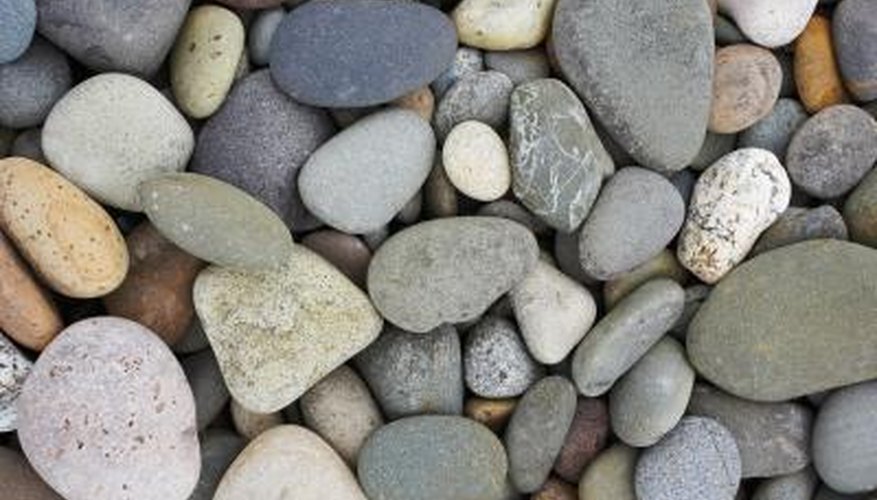Aquarium gravel provides a versatile and natural base to a fish tank but there are alternative substrates available, and you can also mix items for a unique aquascape. Sand, crushed coral, shells or rock clusters can all create attractive formations in your aquarium. Some gravel alternatives can lower or raise pH levels and change specific water requirements, so monitor your water with a pH test kit for alkalinity or acidity after introducing new substrate material.
Sand
Pre-washed aquarium sand is a practical alternative to gravel and it is available in a variety of colours. Fine grade lime-free silica sand from DIY stores is also suitable if you clean it thoroughly before use. Bottom-feeding fish with delicate mouths and barbels are able to forage for food in sand without risking damage from sharp gravel. Catfish and loaches dig through substrate looking for food, and gravel can cause cuts or lodge in their mouths. Keep sand substrate thin and oxygenated to prevent the build-up of potentially dangerous gases. Hydrogen sulphide develops in compacted layers of non-aerated silica sand and is toxic to fish if released into the water.
- Pre-washed aquarium sand is a practical alternative to gravel and it is available in a variety of colours.
- Fine grade lime-free silica sand from DIY stores is also suitable if you clean it thoroughly before use.
Crushed Coral
Coarse or finely crushed coral substrate is beautiful and also helps raise pH levels in the water for species of fish requiring alkaline conditions. You can harden naturally soft or pH neutral water with coral, marble, seashells or limestone for African cichlid tanks for example, but do not use sharp coral sand in an aquarium if you have cichlids that dig in the substrate as it will cause abrasions and tissue damage.
Rocks and Wood
Decorate the bottom of your fish tank with outcrops of river rocks and clusters of large pebbles. Glue the rocks together with silicone before adding them to the aquarium so that they do not slip out of place or fall and damage your fish. Combine sand and pebbles for a natural beach aquascape or sink thoroughly cleaned driftwood or bogwood into the sand -- soak or boil wood before adding it your aquarium to prevent tannins or colour from leeching into the water.
Bare Bottom Tank
There are occasions when you do not require any type of substrate in an aquarium, such as breeding tanks and quarantine tanks. Breeding tanks are used to breed or rear baby fish and as such, practicality is more important than appearance. Some fish keepers add a thin layer of sand to breeding tanks but it is not essential. A bare based tank does not pose the risk of trapping newly-hatched babies in a gravel substrate and it is easier to siphon uneaten food and waste from a bare glass base, making cleaning more efficient. Also substrate is not a good idea in a quarantine tank for sick or injured fish as it may harbour bacteria detrimental to the health of already vulnerable fish.
- There are occasions when you do not require any type of substrate in an aquarium, such as breeding tanks and quarantine tanks.
- A bare based tank does not pose the risk of trapping newly-hatched babies in a gravel substrate and it is easier to siphon uneaten food and waste from a bare glass base, making cleaning more efficient.
